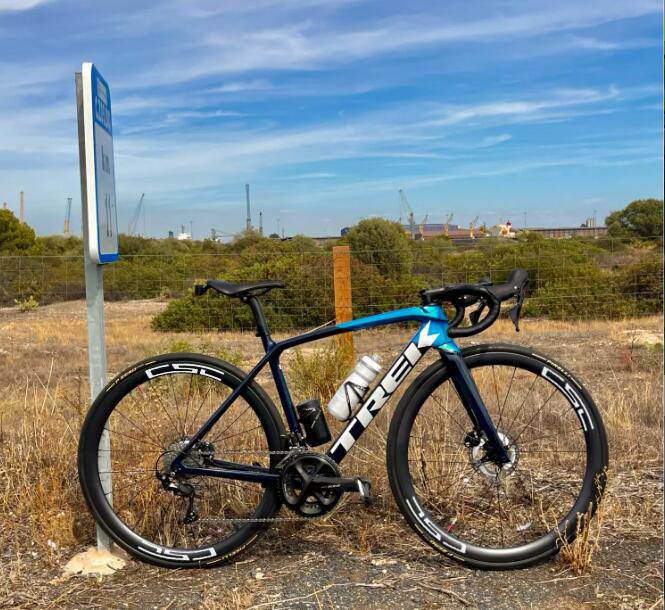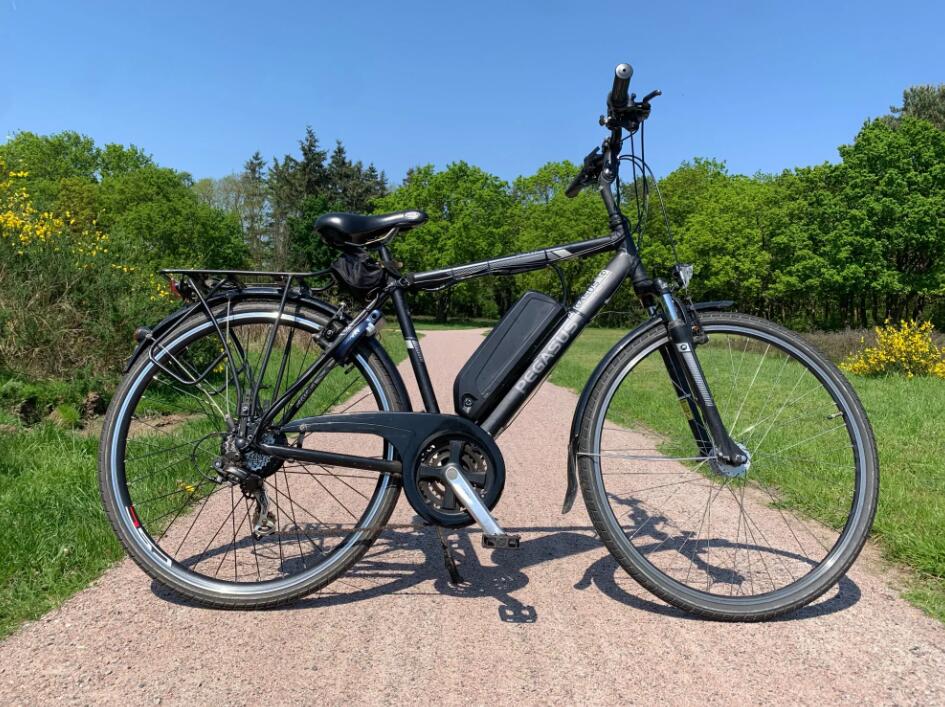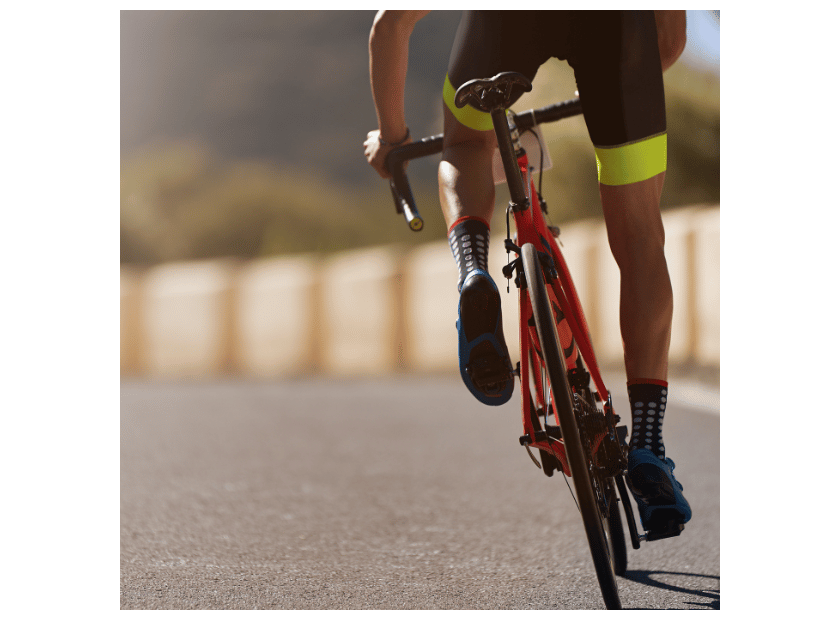How do you improve the strength of your cycling and dominate the track?
Cycling, in addition to be mix of stamina and power, is a physical exercise that requires one’s strategy as well for better performance. To triumph and take over on the road is beyond merely training; it’s about possessing a deep understanding of cycling power mechanics while implementing them correctly. It is necessary to provide scientifically supported tips designed to help boost cycling power thus giving cyclists an edge over other riders in this article.
It will discuss actionable strategies such as interval training, optimizing cadence, leveraging technology like power meters for real-time performance tracking among others. These approaches if properly employed can lead to substantial improvements in both speed and efficiency allowing the cyclists reach their peak performance levels dominating their goals on the road.
How to Boost Your Cycling Power?
Any rider seeking improved road performance should focus on enhancing his/her cycling power. A combination of tactics, use of equipment, and customized training can greatly raise one’s cycling skills. This section highlights some key techniques including interval training, use of a power meter and adjustments in cadence together with their implementation processes as well as benefits.

Use Interval Training
Interval training is one highly effective way of improving your cycling ability. This involves alternating between high intensity effort intervals and lower intensity or rest intervals. Such trainings improve aerobic fitness as well as anaerobic capabilities which result into increased endurance as well sprinting velocity. Important parameters for interval trainings are:
Duration: usually from 30s to 8 minutes depending on goals (sprint vs endurance).
Intensity: High-intensity intervals should be performed at 80%-95% of your maximum heart rate or at a power output close to your VO2 max.
Recovery: Recovery periods vary but maintaining an intensity ratio work: rest =1:1 is common.
Frequency: Incorporating 2-3 interval sessions per week into your training regimen is advisable allowing for adequate recovery between sessions.
Using a Power Meter to Track Performance
A power meter is used to measure the actual power output in watts, providing real-time data about your cycling performance. It can be adjusted accordingly for effective training and progress tracking. Some key parameters to monitor with a power meter include:
Functional Threshold Power (FTP): This is the average power you can hold for one hour. It is an important reference point when setting training zones.
Normalized Power (NP): This gives a more accurate estimate of ride effort especially in rides with variable intensity.
Intensity Factor (IF): This is the ratio of NP to FTP and it shows how intense the whole ride was.
Training Stress Score (TSS): A number combining duration and intensity that reflects the total workload of a ride.
Increasing Power Through Cadence Adjustment
Changing your cadence can significantly improve cycling strength. The rate at which cyclists pedal is usually measured as revolutions per minute (RPM). When adjusting cadence, keep these points in mind:
Optimal Cadence Range: 80-100 RPM is generally considered optimal but finding an individual’s optimal range may be critical for maximizing efficiency and power.
Low Cadence Drills: Pedaling at slower cadences (60-70 RPM) against higher resistance increases muscular strength.
High Cadence Drills: Cycling at faster rates (> 100 RPM) helps in increasing pedaling efficiency while reducing muscle fatigue, thus enabling sustained high power over longer distances.
Thus, by incorporating these strategies into your training routine, you can effectively enhance cycling power and general road performance.
Optimizing Your Cycling Efficiency
Fine-tuning technique and equipment for both energy saving speed improvement, without making any increase in the output power is a way of optimizing cycling efficiency.
Developing a Structured Training Plan
Structured training plan is so important to gradual improvement towards specific goals in cycling. This will include:
Baseline Assessment: Determine current FTP, NP and TSS which will help set reasonable expectations.
Progressive Overload: Avoid plateaus by gradually increasing the intensity and volume of your training over time.
Recovery Periods: It is necessary to introduce rest days and lighter weeks during which physiological adaptations can take place.
Varied Workouts: The endurance rides are combined with interval trainings and technical drills focusing on different aspects of fitness as well as cycling skills.
Incorporating Hill Climbs to Enhance Power Output
To build up muscular endurance in cycling, hill climb is one of the best ways. Important components are:
Gradients and Duration: Use combinations of short steep climbs alongside longer more moderate ascents that challenge different energy systems or muscles groups.
Cadence Variation: To develop versatility keep the same effort regardless cadences while attempting this exercise.
Recovery Intervals: Make sure there is enough recovery between reps here so that each hill can therefore be treated like it’s own interval workout session where only quality efforts would count most towards gaining overall strength together with improving anaerobic capacity (Grothuesman & Vosselman 2003).
Focusing on Sustained Power for Endurance
Increasing sustained power helps maintain high levels of effort over long distances. These activities involve:
Long, Steady Distance Rides (LSD): Aim to maintain an even effort level (around 70-75% of FTP) for extended periods until a goal is reached.
Tempo Training: Working just below FTP, this aids in improving muscle endurance and fuel economy.
Nutritional Support: Sufficient carbohydrate consumption prior to and throughout long rides helps maintain energy levels.

Enhancing Performance with Advanced Techniques
Apart from the basic aspects, advanced techniques can help improve cycling performances significantly. Cyclists, who focus on precise power measurements and structured training blocks, will be able to unlock new limits of their strength and stamina.
Conducting an FTP Test for Accurate Power Measurements
This FTP (Functional Threshold Power) test is vital in establishing your baseline of cycling performance. It measures the maximum sustained power that a rider can hold for one hour continuously; it is used as a reference point in setting the intensity level of training. The essential parameters are:
Test Protocol: A common approach would be a 20-minute all-out effort with FTP calculated by taking 95% of average power during this period.
Preparation: Ensure you are well hydrated, had enough sleep in previous night to get accurate results by eating right before the day of test.
Equipment: The test requires a reliable power meter and either a stationary trainer or simply an unceasing road segment at your disposal.
Implementing Block Training to Boost Power Quickly
Block training involves periods of concentrated workouts aimed at quickly enhancing specific areas of cycling performance. These include:
Intensity: Each block should concentrate on high-intensity efforts above FTP for short durations targeting anaerobic capacity improvement (Armstrong et al., 2002).
Duration: Blocks generally span two or three weeks followed by one week recovery that will allow adaptation without overtraining.
Progression: Increase workload and difficulty slightly within each block so as to continually challenge yourself physically (Bourdin & Penneron 1998).
Mastering Skills for Increased Power and Speed
In order for cyclists to increase their speed and power, they must master both physical and technical skills which entails refining pedal stroke efficiency as well as optimizing bike gear ratios that are critical for maximum performance.
Boosting Power Figures through Enhancing Pedal Stroke Efficiency
For one to get the highest possible power, it is necessary for him or her to pedal efficiently. Main elements to improve include:
Riding Speed: Keeping an optimum speed of 80-100 RPM helps in maintaining power outputs without spending more energy than needed.
Technique: Concentrate on pedaling in a circular way with even power application throughout the entire cycle.
Balance: Distribute your effort equally between both legs for optimal effectiveness and less weariness.
Exercises: Carry out regular single-leg drills and high-cadence spinning to boost muscular memory as well as pedaling efficiency.
Enhancing Power Output by Optimizing Bike Gear Ratios
Selecting the right gear can have a major impact on a rider’s ability to keep up high speeds while maintaining efficient transfer of force. Key considerations include:
Terrain Selection: Opt for the gear ratios that correspond most closely with roads you use frequently; thus enabling you to maintain uniform cadence levels across diverse slopes.
Crankset & Cog Combinations: Employing gearing systems that provide narrow gaps between gears will help sustain appropriate cadences and power output levels.
Physical Fitness of Cyclist/Strength of Rider: The selection of gears should suit personal physical characteristics so that they enhance maximum power production without overworking oneself.
Experimentation and Adjustment: Regularly test different gear combinations during training sessions in order to come up with best fitting ones for individual competitive performances needs.
Questions and answers
Q) What can I do if I want my cycling strength go up much faster?
A) High-intensity intervals, weightlifting combined with sound nutrition are ways of developing huge muscles. Consistency in practice by pushing the limits will also increase your cycling prowess.
Q) How Can I Improve My Cycling Power?
A) For increasing cycling power, focus intensive interval training, resistance training and good nutrition. In addition, consistent training and pushing limits will help raise your power on the bike.
Q) What Are Some Tips For Increasing Power On The Road?
A) Maintain a high cadence, draft behind other riders, and make sure your pedal stroke counts. Also sleep enough to allow muscles to restore themselves.
Q). How does bigger gears help in more cycling power?
A) Using larger gears when applicable can improve strength and muscle power. This forces your legs to exert more pressure leading to increased overall cycling power over time.
Q). What is Functional Threshold Power (FTP) and its relationship with improving cycling performance?
A). Functional threshold power (FTP) refers to the maximum amount of power that a cyclist can maintain for long durations without exhaustion. When you train at or slightly above your FTP level, you are able to boost your biking stamina and energy levels thus enhancing overall output.
Q). Can increasing my average power output improve my cycling?
A). Yes, focusing on raising average watts during rides is one way of making dramatic improvements in ones pedalling ability. It helps in riding faster, climbing hills efficiently as well as keeping up with faster group rides.
Q). How Can I Boost My Power Output for a Time Trial or Triathlon?
A). Specific interval sessions should be incorporated into the training plan to generate these movements while maintaining constant cadences throughout. These tactics can help you give your best performance during competition exercises.
Q) How will joining a cycling group ride assist me in getting stronger on the bike?
A) Cycling group rides are an opportunity for self-development, character building, learning from others who have already achieved mastery in it. Riding within the team motivates one person towards harder work out putting higher average watts per ride thereby becoming improved cyclists altogether.


